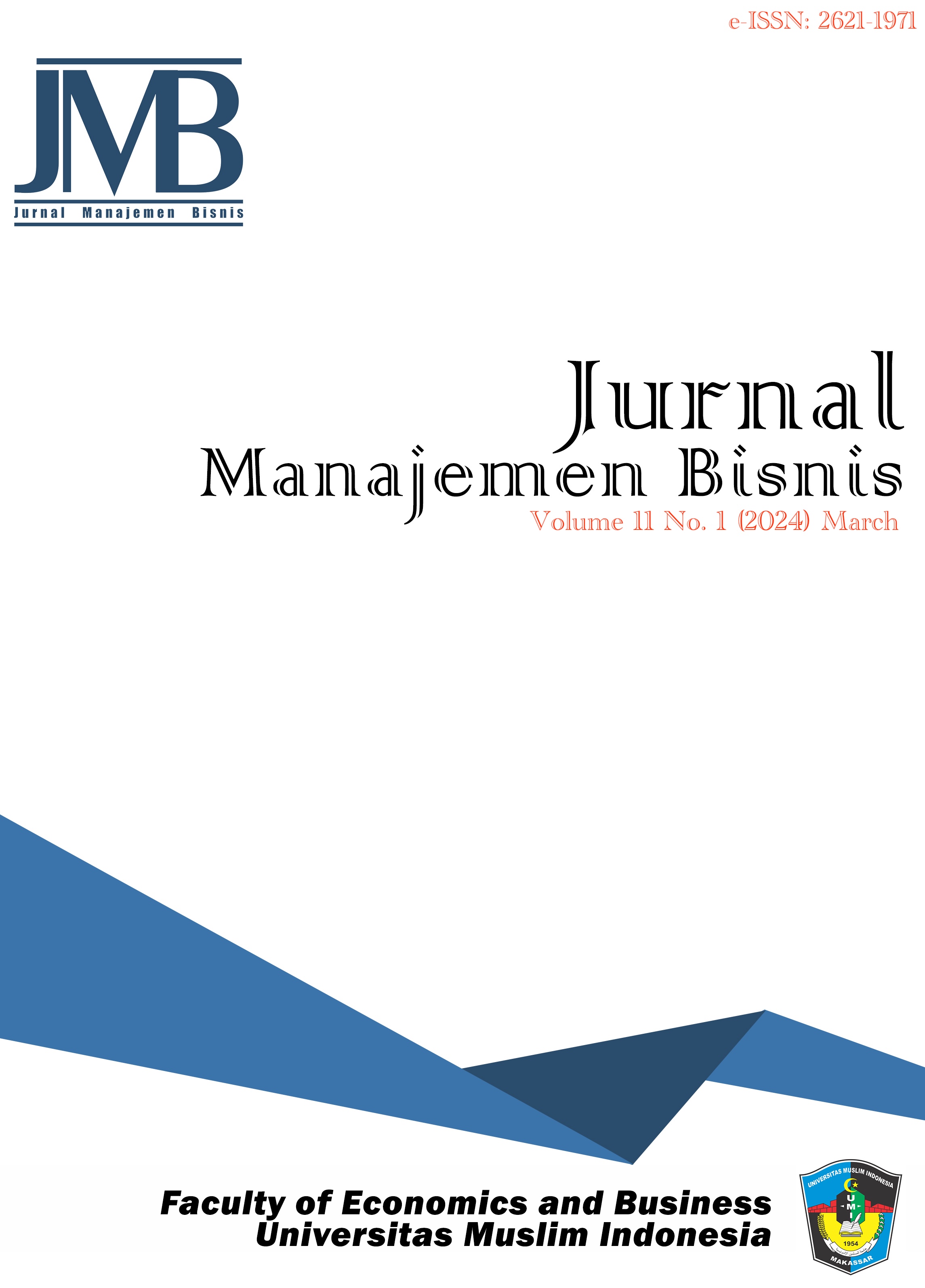Analysis of Halal Certification in Small and Medium Industries in the Development of Halal Tourism in Tourism Areas in North Sumatra
DOI:
https://doi.org/10.33096/jmb.v11i2.936Keywords:
Halal Certificate, Small and Medium Industries, Halal TourismAbstract
Halal Certificate is an important thing for Small and Medium Industries to have in terms of marketing their products and for the economic welfare of the people. Likewise, for Small and Medium Industries located in Tourism Areas where it can develop Halal Tourism in these tourist areas. However, in reality there are many obstacles faced by Small and Medium Industries in terms of issuing these halal certificates. This study uses the Mix Methode research method where the authors conduct Indept Interviews with experts and business people then provide questionnaires to business people regarding the process of making halal certificates for the businesses they run. The procedures for making halal certification for Small and Medium Industries (SMIs) in the development of Halal Tourism in Tourism Areas in North Sumatra include: understanding halal certification requirements and attending halal assurance system (SJH) training, implementing a halal assurance system (SJH), preparing halal certification documents, registering halal certification (uploading data), conducting preaudit monitoring and payment of certification contracts, conducting audits, conducting post-audit monitoring, obtaining halal certificates. The results of this study indicate that only 50% of SMEs understand about halal certificates and procedures for making them. The obstacles in making halal certificates are not believing in the importance of halal certification for their business, not believing in the importance of halal certification for their business. For SMEs that have succeeded in having a Halal Certificate after a simple Linear Regression Test the results show that Halal certificates have a positive and significant effect on SME income of 77.7%.
Downloads
References
Abdul Aziz in Burhan Bungin. (2005). Qualitative Research Data Analysis (Pert Edition). Raja Grafindo Persada.
Adiwarman Karim. (2012). Islamic Macroeconomics. PT Raja Grafindo Persada.
antaranews.com. (2021). The number of Indonesian islands is now 17,000. September 12, 2021. https://www.antaranews.com/
Chapra, M. U. (2000). Islam and Economic Development. Gema Insani Press.
David, & R, F. (2006). Strategy Management: Concepts. Gramedia.
Harahap, I. (2018). Development Economics: A Transdisciplinary Approach. Perdana Publishing.
Hashim, A. I. (2016). Macroeconomics. Kencana.
Hikmat, H. (2006). Community Empowerment Strategy. Humaniora Utama Press.
Hoetoro, A. (2018). Islamic Microeconomics. UB Press.
Holis, M., Sayyidi, S., & Musoffan, M. (2019). Optimization Analysis of Salt Farmers Activities and Welfare in Pamekasan Regency. Eaj (Economics and Accounting Journal), 2(3), 198. https://doi.org/10.32493/eaj.v2i3.y2019.p198-205
Hutomo, M. Y. (2000). Community Empowerment in Economics: Theoretical Review and Implementation. Adiyana Press.
Jhingan, M., & Guritno, D. (2016). Development economics and planning / M.L. Jhingan ; translator, D. Guritno. Jakarta : Rajawali Press, 2016 Depok: RajaGrafindo Persada, 2016. https://opac.perpusnas.go.id/DetailOpac.aspx?id=1135767
Kartasasmita, G. (1996). Development for the People: Combining Growth and Equity. Cidesindo Library.
Kristiawan. (2021). Potential Development of Environmentally Friendly Fruit Superior Products. Scopindo Media Pustaka.
Kumparan.com. (2021). The Most Important Livelihood (Occupation) of Coastal Residents. September 09, 2021. https://kumparan.com/kabar-harian/mata-pencaharian-pekerjaan-penduduk-pantai-yang-paling-utama-1wUPjcWIITG
Mardikanto, T., & Soebiato, P. (2015). Community Empowerment in Public Policy Perspective (Cet. 3). Alfabeta.
Noor, J. (2012). Research Methods. Kencana Prenada Media Group.
Prima, T. P. (2015). Big Indonesian Dictionary. Gita Media Press.
Raharja, P. (2005). Macroeconomic Theory. Faculty of Economics, University of Indonesia.
Rappana, P., & Sukarno, Z. (2017). Development Economics. CV Sah Media.
Riyanto, Y. (2007). Qualitative and Quantitative Education Research Methodology. UNESA University Press.
Rosni. (2017). Analysis of the Level of Welfare of Fishermen Communities in Dahari Selebar Village, Talawi District, Batubara Regency. Geography Education.
Siringoringo, H. (2005). Linear Programming: Operations Research Techniques Series. Graha Ilmu.
Siyoto, S. (2015). Basic Research Methodology. Literacy Media Publishing.
Soeratno. (2004). Introductory macroeconomics (Ed.2, Cet.). Publishing Department of YKPN College of Economics.
Sugiyono. (2013). Quantitative, Qualitative and R&D Research Methodology. Alfabeta.
Sukirno, S. (2013). Macroeconomic Theory Introduction. RajGrafindo Persada.
Sumodiningrat, G. (1998). Building the people's economy. Student Library.
Supriyati. (2012). Accounting Computerization Research Methodology. LABKAT.
Suryani, & Hendryadi. (2015). Quantitative Research Methods: Theory and Application in Research in Management and Islamic Economics. Kencana.
Tarigan, A. A. (2011). Islamic Economic Research Methodology. La-Tansa Press.
www.kemenperin.go.id. (2021). Ministry of Industry maintains the supply of salt raw materials for the industrial sector. February 10, 2021. https://kemenperin.go.id/artikel/22287/Kemenperin-Jaga-Pasokan-Bahan-Baku-Garam-untuk-Sektor-Industri
Downloads
Published
Issue
Section
License
Copyright (c) 2024 Jurnal Manajemen Bisnis

This work is licensed under a Creative Commons Attribution 4.0 International License.






